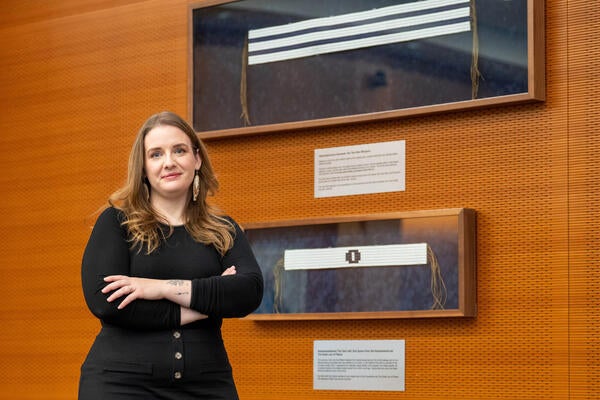
Math can help people identify the bonds of friendship
Research is the first to test how people predict social connections using only statistical information

Research is the first to test how people predict social connections using only statistical information
By Media RelationsNew research reveals that math can help people identify the bonds of friendship.
The work from the University of Waterloo found that people use statistical information to determine bonds between people. It found that children as young as five can enter a room and use statistics on social cues to determine whether two people are friends.
“The ability to discern whether other people are likely to be affiliated is crucial in everyday life,” said Ori Friedman, co-author and professor of developmental psychology at the University of Waterloo. “When an adult joins a new workplace, or a child joins a new classroom, these judgments help them assess whether people are friends.”
Across five studies, the researchers surveyed 528 adults and 135 children to examine their use of statistical information when assuming people have a social relationship. In the studies, researchers presented participants with diagrams of social networks that showed lines drawn between two main characters and other people in the group. Participants were told that these lines indicated friendship, and importantly, researchers did not show a line connecting the two main characters. Researchers then asked participants how likely it was that the two main characters were friends.
“Past research has shown that children and adults infer social connections when people have similarities with each other, but our research is the first to test how people predict social connections using only statistical information,” said Claudia Sehl, lead author and PhD candidate in the Department of Psychology at Waterloo.
The researchers found that both children and adults thought the two main characters were friends when they had a lot of overlap in their social connections in common. This pattern was found in children as young as five years old, suggesting that the ability to consider social connections emerges early in development.
“We were surprised to see that children were able to infer social connectedness at such a young age,” said Sehl. “We did not tell children to count or think about the number of mutual connections, yet children were able to use complex statistical information to learn about relationships spontaneously.”
Sehl adds that participants were also able to conclude the strength of social connections from the size of the network. For example, when a character had many mutual connections with someone with a smaller network, participants saw this as more meaningful than having many mutual connections with someone with a larger social network.
The researchers plan to build on these findings and explore whether these inferences also generalize to other non-social networks.
The paper, The Social Network: How People Infer Relationships From Mutual Connections, authored by Friedman, Sehl and Waterloo professor Stephanie Denison, appears in the Journal of Experimental Psychology.

Read more
New research from the University of Waterloo centres Haudenosaunee-led efforts in the repatriation and reclamation of cultural and intellectual property

Read more
Researchers awarded funding to investigate ecology, climate change, repatriation, health and well-being through cultural and historical lens

Read more
New Canada Research Chairs will tackle future-focused problems from social robots and intergroup attitudes to geochemistry and nanoscale devices
The University of Waterloo acknowledges that much of our work takes place on the traditional territory of the Neutral, Anishinaabeg, and Haudenosaunee peoples. Our main campus is situated on the Haldimand Tract, the land granted to the Six Nations that includes six miles on each side of the Grand River. Our active work toward reconciliation takes place across our campuses through research, learning, teaching, and community building, and is co-ordinated within the Office of Indigenous Relations.